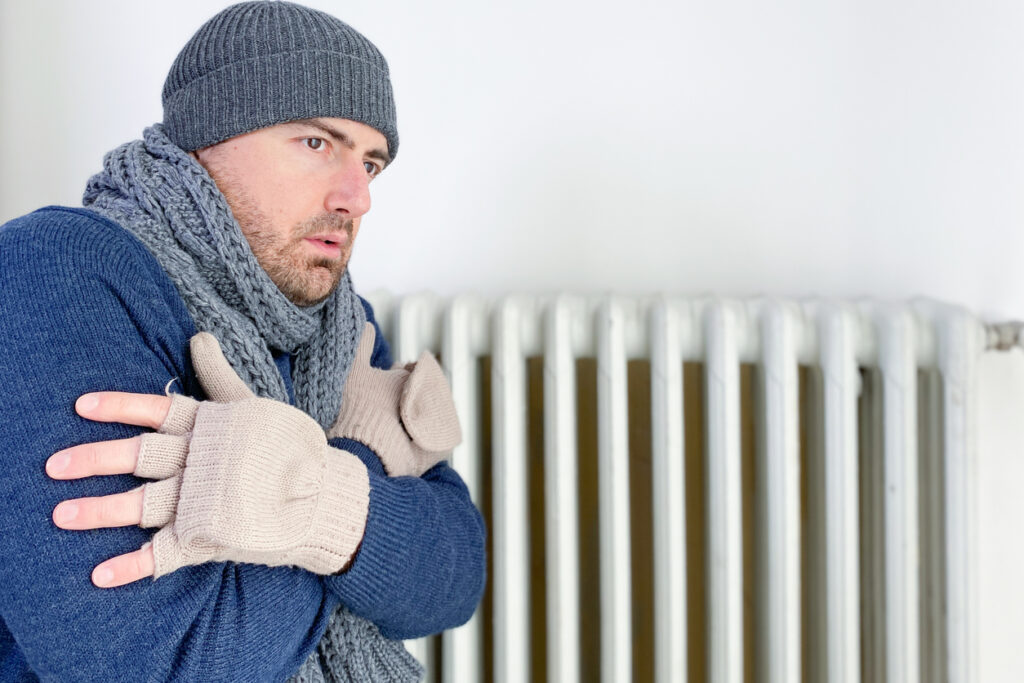
When your home’s utilities and systems start to act up, where do you usually turn? Google! We often treat this search engine as a problem-solving guru or instruction manual.
But how do you know the advice you’re receiving is helpful or even correct? If a household system is acting up, you want reliable solutions fast.
That’s where we come in. As the cold weather continues to hang on, we thought it might be helpful to provide some information about furnaces. So, we’ve compiled a list of some of the most common questions that homeowners ask about this heating system. Here are our answers that will provide you with practical and direct advice.
Note: These are just the top questions asked, and this post shouldn’t be considered your end-to-end guide to furnaces. If you have any questions or problems that don’t appear on this list, don’t hesitate to contact us for assistance.
1. Why is my furnace blowing cold air?
During the chilly winter months, cold air circulating through your house is not something anyone wants. There are a few possible explanations. Consider checking these parts of your unit before calling for emergency maintenance.
Dirty Air Filters
Air filters are a common cause. Why? Dirt and debris can build up in your air filters and will restrict your airflow, causing overheating.
As your furnace continues to overheat, it reaches its “high limit,”—meaning that it’s too hot. This leads to your unit’s heating shutting off. The high limit is a safety measure that exists to prevent fires or other issues. Check all filters and replace them if necessary. If you’re not sure how to check and replace these. Contact us for assistance. We’re happy to help.
Faulty Thermostat
These little appliances are more critical to your furnace’s function than most people think. If your thermostat is broken or if it’s on the wrong setting, it can cause your furnace to blow air at an uncomfortable temperature. Barring wiring issues, the fix here is simple. Go to your thermostat and make sure it’s set in the “heat” position.
Mechanical Failure
Your furnace could also be experiencing more technical malfunction. This is especially common in older units. Mechanical failure can lead to overheating and other issues. The fix here would most likely involve a repair visit from your Rod Miller tech.
2. Why is my furnace not blowing any air?
Some might prefer no air over cold air. No air, however, is an indicator of a major problem with your unit. Unfortunately, this issue also can get very complicated very fast. There can be many reasons for no air circulation at all. In fact, the problems we listed in the section above can be responsible for your furnace blowing no air. Check those filters and thermostats first, and then consider our list below.
Failed Blower Relay or Motor
A blower relay is responsible for relaying the power to the blower motor. Your blower motor is responsible for turning on the blower fan in your furnace. This fan then circulates the air through your ducts. If neither is working, you’ll get no air. A faulty motor or relay is a more serious problem that you will most likely not fix yourself. Thankfully, these failures are not a death sentence to your unit. Our techs replace these frequently and can get your furnace back to speed relatively quickly.
Broken Control Board
Your control board is the brains of your furnace- it regulates all the components of your unit. If it’s not functioning correctly, your whole unit will malfunction. These repairs can be complicated and costly, so we recommend calling professionals for this problem.
3. Why does my furnace smell?
Have you ever detected that unpleasant burning odor wafting from your duct? Well, that smell is very common and often does not indicate a maintenance need.
If it is the beginning of the cold season and your furnace has just turned on, it may need to burn off some dust collection. This can cause a burning smell. Wait a few days for the smell to dissipate. Then re-evaluate. If the odor persists for some time, there may be a more significant reason. Your furnace could be having exhaust or electrical issues.
For safety reasons, we advise looking into repairs or an inspection if this is the case.
4. Why is my furnace leaking?
We’ve completed many inspections for many homeowners with apparent furnace leaks. Fun fact: it often wasn’t the furnace. It was the humidifier attached to their unit. If your furnace appears to be leaking, we highly recommend checking for a humidifier leak first. If that was not the culprit, your furnace probably has a drainage issue. Once your drains are clear, the leaking should stop. Any drain blockage can typically be cleared in a single visit from a Rod Miller tech.
5. Why does my furnace seem only to heat certain rooms in my house?
For this final question, the answer is pretty straightforward. Poor heating to certain areas of the home is typically the result of poor airflow and duct design. Your HVAC system may need to be modified or even replaced to correct this. If you’re not prepared for an extensive rework, we recommend a good space heater.
Having furnace issues?
Go through the questions and answers above, and they’ll increase your knowledge of furnace maintenance. At Rod Miller, our goal, as always, is to keep your home as safe and comfortable as possible.
If you still have questions, don’t hesitate to call us at (301)569-7993 or schedule an inspection. You can always trust your home to us.


